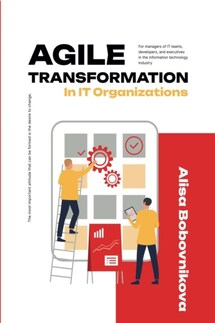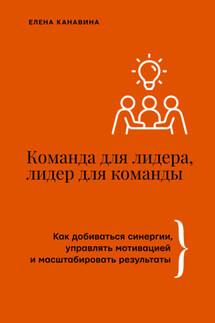Agile Transformation in IT-organizations - страница 5
• the documentation help newcomers to understand the system better.
• Do it twice. If your system is original, you want to verify your ideas or concept. Royce recommends creating some kind of MVP (Minimum Viable Product)11 of your product to check the ideas. Then, the second version of your product will be finally delivered. The first version may not be provided to final customers/users, but stakeholders12 want to see a prototype of the product. It may lead to requirement changes, and it is an effective way of the development process. The final version of the product will be closer to market needs.
• Plan, control, and monitor testing. Testing is one of the most important phases of the SDLC (Software Development Life Cycle)13. You check your ideas and concepts, verify implemented system comparing it with system design. Royce recommends inviting the other persons to verify your system. He says that it would be more effective to give a big part of the testing to people who did not contribute to the system during the previous phases. The documentation will help them to test the system better.
• Involve the customer. Your project customer and stakeholders should be involved in all phases of the development. They will help to design and implement a system that will meet their needs closer. Moreover, the stakeholder may change their opinion about the system and give new requirements. As a Project Manager you should meet the changes with pleasure because after all your customer will be satisfied.
Waterfall is based on a logical sequence of steps that must be taken throughout the software development lifecycle. Each stage is coordinated by competent employees, documented and passed on.
Although the popularity of the Waterfall model has waned in recent years, but the nature of the sequential process used in the waterfall method is intuitively close to developers.
The model proposed by Dr. Royce is extremely simple and clear. It consists of several blocks, each of them covers its own area of responsibility.
Let's look closer at the difference between Agile and Waterfall methodologies.
In management, there is a concept of a project management triangle14:
It includes the amount of work, time and quality. It is important to note that the balance in any methodology is created due to a system of assumptions, so in cascade approach quality can be reduced, and in Agile the amount of work can easily grow.
The project management triangle clearly displays the so-called triple limitation problem associated with the need to balance the scope of the project, its cost and time for implementation without compromising the quality of the final product. Taking into consideration the concept of project management triangle, the difference between approaches will look like this:
In recent years, the waterfall model has been losing its leading position to more flexible methodologies. This is due to the general dynamics in IT, when teams of 5-9 people are responsible for software development, and the deadline can be easily shifted due to the increase in functionality.
Nevertheless, the cascade model is still relevant for large projects and organizations:
• It is resistant to personnel changes. Developers can come and go throughout the life cycle of the project, but thanks to detailed documentation, this practically does not affect the timing of the project;






